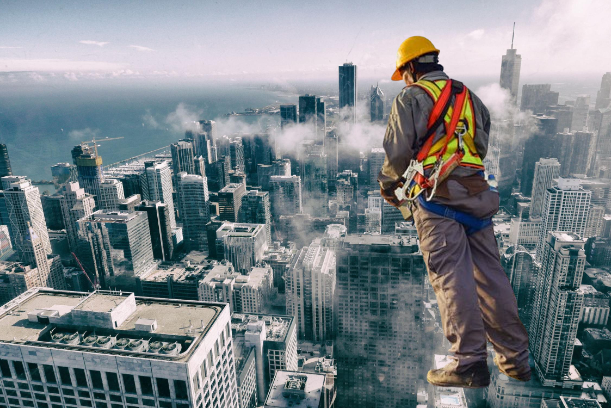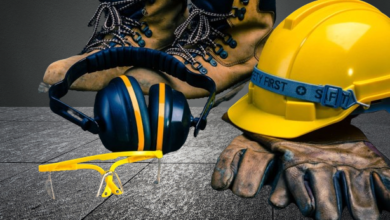Strategies for Hazard Identification in Construction Safety

Building sites are extremely dynamic places that require complex operations, large-scale equipment, and skilled labor to complete risky tasks. In order to develop strategies to mitigate their effects, it is crucial to identify common construction hazards and site risks. In this article, we will examine some of the most common construction site hazards along with workable solutions that may lessen or eliminate their occurrence.
The Need to Address Construction Site Hazards Immediately
The construction sector is essential to both job growth and economic expansion. Unfortunately, they also have higher than average rates of mishaps, injuries, and fatalities; according to OSHA, the national average for fatal injury rates in the construction industry is higher than that of any other industry. For this reason, it’s critical that we comprehend these risks in order to create efficient plans that will lessen their impact and lessen their likelihood.
The Top Ten Hazards on Construction Sites and Their Remedy
Although the variety and complexity of risks associated with construction sites can be overwhelming, we’ll list the ten most common ones here along with workable solutions for their efficient management.
- 1. Dangers of Working at Elevations
One of the riskiest jobs on construction sites is working at heights, which results in many fatalities every year. When construction workers use unstable platforms or improperly use fall protection safety equipment, the risk increases significantly.
- Strategies for Mitigation:
- Follow manufacturer instructions and OSHA regulations when working at heights.
- Make sure to regularly check and maintain any equipment used for working at heights, like scaffolding and ladders.
- Give thorough instruction on fall protection equipment usage and ladder safety.
- To prevent falls, promote the use of personal protective equipment (PPE) and make sure it is used correctly.
- 2. Dangers of Moving Things
Construction sites are extremely dynamic settings with lots of moving objects, including heavy machinery, supply trucks, and building supplies, which, if handled carelessly, could result in serious injuries.
- Strategies for Mitigation:
- Establish stringent guidelines for the use of equipment and the transportation of materials on the job site.
- To designate areas for movement and possible danger, use markers and signage.
- Give instruction on handling materials and operating machinery safely.
- To increase their visibility on the job site, make sure construction workers are dressed in high-visibility apparel.
- 3. Trips, Falls, and Slips
Slips, trips, and falls on construction sites are frequently caused by uneven surfaces, cluttered workspaces, construction equipment, and loose materials. These incidents frequently result in minor injuries as well as more serious incidents or fatalities.
- Strategies for Mitigation:
- Examine work areas frequently and remove any possible trip hazards.
- On surfaces that are prone to becoming slick, apply anti-slip materials.
- Adopt appropriate housekeeping procedures to maintain clutter-free, organized workspaces.
- Teach employees how to spot possible trip and fall hazards.
- 4. Dangers Caused by Noise
Building sites can make for very noisy surroundings. Construction workers may sustain permanent hearing damage as a result of prolonged exposure to extremely loud noises.
- Strategies for Mitigation:
- Keep a close eye on the noise levels at the construction site and conduct a thorough risk assessment of noise pollution.
- Equip employees with the proper hearing protection gear.
- Establish suitable work schedules to reduce the amount of noise that employees are subjected to.
- Make use of quieter machinery and ground-based equipment.
- 5. Dangers of Vibration in the Hand-Arm
Handheld power tool use on some construction sites can result in Hand-Arm Vibration Syndrome (HAVS), which can be extremely painful. This illness has detrimental effects on joints, blood vessels, and nerves.
- Strategies for Mitigation:
- Put a time limit on how long employees use vibrating tools.
- Give appropriate instruction on power tool safety.
- Make sure your tools are in good working order by giving them regular maintenance and inspections.
- Promote frequent rests to lessen extended vibration exposure.
- 6. Material Handling Risks
Injuries can result from handling materials, both mechanically and manually. This could be the consequence of unsafe handling procedures, overloading equipment, or using the wrong overhead lifting tools and techniques.
- Strategies for Mitigation:
- Teach employees the proper methods for handling manual objects.
- Employ mechanical assistance when moving large objects.
- Use safe work procedures when using equipment.
- Examine material handling equipment on a regular basis.
- 7. Dangers of Airborne Materials and Fibers
Workers in the construction industry may be exposed to dust, asbestos, and other airborne fibers and materials that, if inhaled over an extended period of time, could seriously jeopardize respiratory health. There could be a serious respiratory disease if this exposure continues.
- Strategies for Mitigation:
- Assign suitable respiratory protective gear.
- Use work procedures to reduce the amount of hazardous materials released into the atmosphere.
- Keep a regular eye on the construction site’s air quality.
- Employees should receive training on the risks associated with flying and how to properly wear personal protective equipment.
- 8. Risks Associated with Electrical Systems
Workers who come into contact with overhead power lines or use faulty equipment may sustain electric shocks, burns, or even die as a result of unintentional contact with live electrical wires.
- Strategies for Mitigation:
- Check tools and electrical equipment for flaws on a regular basis.
- Educate construction workers about the risks associated with working near power lines and electrical safety.
- Ground-fault circuit interrupters, or GFCIs, should be used on all electrical devices.
- Make certain that all electrical work complies with both national and local electrical codes.
- 9. The Dangers of Asbestos
Workers on older construction sites are at serious risk of asbestos exposure. Long-term inhalation of asbestos fibers can lead to major lung conditions like asbestosis and lung cancer.
- Strategies for Mitigation:
- Do asbestos surveys prior to beginning renovations on older structures.
- Educate employees on safe work procedures and the hazards associated with asbestos.
- Materials containing asbestos should be removed by certified asbestos removal contractors.
- Give employees respiratory protection gear.
- 10. The Dangers of Falling Structures
On construction sites, collapsed structures, like scaffolds or partially built buildings, can cause fatalities or severe injuries. This is frequently the result of overloading or insufficient supports for the structures.
- Strategies for Mitigation:
- Check for signs of stress and stability in structures on a regular basis.
- When building or loading structures, abide by the design parameters and load restrictions.
- Workers should receive training on the risks of overloading structures and the significance of adhering to load limits.
- Make sure scaffolds are constructed and inspected by qualified individuals.
The Value of Education in Reducing Hazards on Construction Sites
Training is one of the best strategies to lower the risks associated with construction sites. All workers involved in construction sites should receive continual education on construction worker safety, as workers who are properly trained in identifying hazards and putting safety measures in place are less likely to be involved in accidents. Because of this, it’s important to regularly hold safety refresher courses to ensure that construction worker safety is always the top priority.
Technology’s Place in Risk Management for Construction Sites
When it comes to managing construction projects and site hazards, modern technology can be extremely helpful. A construction project’s many aspects, including safety, can be monitored and controlled with the help of software solutions like construction management systems. These systems offer actionable insights to improve safety procedures along with real-time updates on safety performance.
In summary
Even though there are many risks associated with working in the construction industry, these risks can be effectively managed and reduced with careful planning, training, and technology utilization. By being aware of the common risks associated with the site and implementing the appropriate safety measures to guarantee project success and a safer working environment for their employees.

